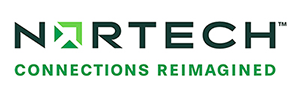
In the world of medical devices, ensuring patient safety is priority. Regulatory bodies worldwide set stringent guidelines to minimize risks associated with these life-changing technologies. For medical device companies, navigating these regulations can be challenging, especially when dealing with overlapping standards like ISO 13485 and the US Food and Drug Administration’s (FDA) 21 CFR Part 820. Thankfully, recent efforts to harmonize these standards gives manufacturers peace of mind. It allows them to focus more on what matters most: bringing safe and effective devices to market.
Understanding the Landscape: ISO 13485 and Part 820
ISO 13485 is an internationally recognized standard for quality management systems (QMS) specific to medical devices. It outlines a framework for establishing and maintaining processes for consistent quality and safety throughout the device’s lifecycle. This includes anything from design and development to production and post-market surveillance.
On the other hand, 21 CFR Part 820 is a regulation enforced by the FDA. It outlines the Quality Management System Regulation (QMSR) for medical devices sold within the United States. It establishes specific requirements for design controls, production and process controls, and complaint handling. This is for the goal of ensuring patient safety and device effectiveness.
The Power of Alignment: Benefits of Harmonization
While both ISO 13485 and Part 820 share the same core objective of patient safety, historically, they have operated as separate entities. This presents a challenge for medical device companies, particularly those seeking global markets. Manufacturers were forced to maintain two distinct QMS, leading to redundancies, inefficiencies, and increased costs.
The good news is that the tide is turning. Recognizing the burden of maintaining separate systems, regulatory bodies are working towards harmonization – aligning the core principles of both standards. This collaborative effort brings a variety of benefits to medical device companies:
Reduced Costs and Improved Efficiency
By merging overlapping requirements, companies can streamline their QMS, eliminating the need for duplicate processes and documentation. This translates to significant cost savings and improves operational efficiency.
Simplified Global Market Access
With a harmonized QMS, companies can leverage their existing systems for compliance in various regions. This eliminates the need for separate audits and certifications for different markets, simplifying global market access.
Enhanced Risk Management
Both ISO 13485 and Part 820 emphasize robust risk management practices. Harmonization strengthens these processes by providing a more unified approach to risk identification, assessment, and mitigation. This fosters a culture of continuous improvement, meaning safer and more reliable devices.
Clearer Communication and Collaboration
With a common language and framework, communication between manufacturers, regulatory bodies, and other stakeholders becomes smoother. This fosters better collaboration and a more efficient regulatory environment.
ISO 13485 and Part 820 Harmonization in Action
While the process of harmonization is ongoing, there are concrete steps medical device companies can take to leverage its benefits:
Gap Analysis
Conduct a thorough analysis to identify gaps between existing QMS and the harmonized standards. This will help prioritize areas for improvement.
QMS Integration
Develop a unified QMS that integrates the core principles of both ISO 13485 and Part 820. This ensures a comprehensive approach to quality and risk management.
Risk Management
Strengthen existing risk management practices, ensuring comprehensive identification, assessment, and mitigation of potential hazards throughout the device lifecycle.
Training and Awareness
Educate employees on the harmonized standards and their impact on their roles and responsibilities. This fosters a culture of compliance and risk management within the organization.
The Road Ahead: Embracing a Harmonized Future
The harmonization of ISO 13485 and Part 820 represents a significant step forward for the medical device industry. By streamlining regulations and promoting a unified approach to quality and risk management, it empowers companies to focus their resources on what truly matters: developing innovative devices that improve patient lives. As the harmonization process continues to evolve, medical device companies that embrace this change will be positioned well. They will be able to navigate the global regulatory landscape with greater efficiency and confidence, ultimately contributing to a safer future for patients worldwide.
Talk with your Nortech representative to learn more now!
